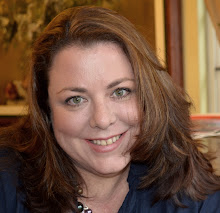After a recent comment on my last blog, I decided to dabble with “digital art “for a couple of hours today.
The reason behind this is that apparently digital artists are often “made to feel inferior by their painting peers.” Initially when I read this, I was somewhat taken aback, but I should not have been. This sort of artistic arrogance has been around forever. Michelangelo of High Renaissance fame, regarded sculpture as the most technically challenging and intellectual artistic practice whereas Leonardo is said to have mentioned that sculptors were akin to bakers, being dirty and covered in dust.
Impressionism, recognized as a major frontier in art history and the threshold of the modern art movement, was initially a label given to these masters of the new movement, in insult!
Claude Monet, Pierre Auguste Renoir, and Edgar Degas are now perhaps the most recognized names in art, yet they were ridiculed and insulted when they first began. Critics described their work as highly unsuitable for the public...the result of mental derangement.
Cubism received its name from the harsh insults art critics lashed out with against the style upon its first exhibition in Paris about 1910, one of the founders of the movement being Picasso.
Even today artists who use oils as a medium frown upon those who chose acrylic or watercolours and traditionally oil paintings are priced at a higher price than any other medium, which cannot really be justified in material costs because good quality acrylics will set you back financially as much as oils paints will and believe me, you will fall on your back at the price of 1st class pastels.
Digital art is like any other art. It just is created using different tools than the more traditional arts. Art is not about the tools used to create it. It is about the vision, message, or emotion of the artist. Photography is a medium through which artist's may create art. Likewise, a computer is just a medium or tool through which an artist can express his/her vision of line, form, colour, composition and rhythm.
Digital Photography The artist uses a digital or conventional camera. The photographs are digitized and translated to the computer environment where the artist uses image editing and special effects software to perform darkroom type manipulations.
Photopainting This combines the disciplines of photography and painting. The artist uses image editing and paint software to go beyond dark room techniques to add further expression to the image.
Digital Collage This is a technique of combining many images from varying sources into one image. This is most commonly achieved by the use of layering techniques in image editing and paint software. The artist may also use images from x-rays or radar to produce images that the eye does not normally see, which expands the realm of human perception.
Integrated Digital Art This is the "mixed media" of the digital art world. Artists combine any number of the techniques to achieve unique results. The digital environment is much less restricted than conventional mediums in this type of integration and manipulation.
Digital Painting 2D: The artist creates 2D images totally in the computer virtual environment with the use of painting tools that emulate natural media styles. Sometimes referred to as "Natural Media".
3D: The artist uses 3D modelling and rendering software to essentially sculpt in virtual space. This method also makes use of all of the other methods.
Vector Drawing- The artist uses vector drawing software and creates the image totally in the virtual environment. This makes use of shapes which are outlined and can be filled with various colours and patterns. This tends to produce a harder edged or graphic look.
Algorithmic/Fractals This is art produced exclusively by mathematical manipulations. This is the so-called "computer generated" art. The art here lies in the invention of the mathematical formulas themselves and the way the programs are written to take advantage of the display capabilities of the hardware. The art also lies in the creative intentions and subsequent selections of the artist/mathematician.
Digital artists are repeatedly told “anyone can churn out that crap”. I challenge that statement. Anyone can paint and “churn out crap” but a distinction will be clearly visible between those who understand their tools, who have imagination, who work inspired, and those who don’t!
Give credit where due, no matter what genre the art. Show some respect for the vision, message, or emotion of the artist.


